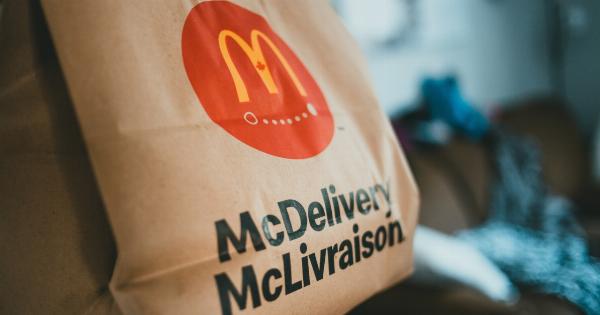Eating a low-fat diet does not mean that you have to compromise on taste. You can still enjoy delicious meals while reducing your intake of fat.
A low-fat diet is beneficial for those who are looking to lose weight, reduce cholesterol and promote heart health. Here are some easy ways to cut fat from your meals.
Choose Lean Protein Sources
Protein is essential for building and repairing tissues in our body. However, many protein sources are high in fat. It is important to choose lean protein sources to reduce your overall fat intake.
Some of the best low-fat protein sources include chicken breast, turkey breast, fish, tofu, and legumes. These sources of protein are not only low in fat but also rich in essential nutrients such as vitamin B12, iron, and omega-3 fatty acids.
Use Low-Fat Dairy Products
Dairy products are a good source of calcium, vitamin D, and protein. However, they can also be high in fat. To reduce your fat intake, opt for low-fat or skimmed dairy products. For instance, choose skimmed milk, low-fat yogurt, and reduced-fat cheese.
These options provide all the nutritional benefits of dairy without the added fat.
Bake or Grill Instead of Frying
One of the easiest ways to cut fat from your meals is to switch from frying to baking or grilling. Fried foods are high in fat content as they absorb oil during the cooking process.
On the other hand, baking or grilling does not require any oil, making it a healthier cooking option. If you are a fan of fried foods, try baking or grilling your food instead to reduce your fat intake.
Avoid High-Fat Sauces and Dressings
Sauces and dressings add flavor and moisture to your meals, but they can also be high in fat. For example, creamy sauces like alfredo sauce or mayonnaise-based dressings are high in fat and calories.
To reduce your fat intake, opt for low-fat or fat-free alternatives such as salsa, marinara sauce, or vinaigrettes. These options are low in fat and calories while still adding plenty of flavor to your meals.
Choose Whole Grains
Whole grains are an excellent source of fiber, which promotes digestion and helps you feel full for longer periods. However, many refined grains are high in fat, such as croissants, doughnuts, and pastries.
To reduce your fat intake, choose whole-grain products like brown rice, whole wheat bread, and quinoa. These options are low in fat while providing essential nutrients such as fiber, vitamins, and minerals.
Reduce Your Portion Size
Even if you are eating low-fat foods, consuming large portions can lead to consuming more fat than you intend. To reduce your total fat intake, consider reducing your portion sizes.
Using a smaller plate or measuring your food can help you control your portion sizes and reduce your fat intake.
Eat More Fruits and Vegetables
Fruits and vegetables are an excellent source of vitamins, minerals, and fiber. They are also low in fat, making them an ideal part of a low-fat diet.
Aim to fill at least half of your plate with fruits and vegetables to increase your intake of essential nutrients and reduce your fat intake.
Choose Low-Fat Cooking Methods
The cooking method you choose can also affect the fat content of your meals. Steaming, boiling, and poaching are low-fat cooking methods that help to retain the nutritional value of your food.
Grilling, roasting, and sautéing are higher in fat but can still be part of a low-fat diet if used in moderation.
Limit Your Intake of Processed Foods
Processed foods often contain added sugars, salt, and fats, making them high in calories and unhealthy. To reduce your fat intake, limit your intake of processed foods such as cookies, cakes, chips, and processed meats.
Instead, choose whole, natural foods that are low in fat and high in vitamins, minerals, and fiber.
Takeaway
Eating a low-fat diet is a healthy way to improve your overall health and well-being. By making simple changes to your diet, you can reduce your fat intake without compromising on taste.
Choose lean protein sources, low-fat dairy products, whole grains, and plenty of fruits and vegetables, and limit your intake of processed foods. With these easy changes, you can enjoy delicious, healthy meals that will help you achieve your health goals.































